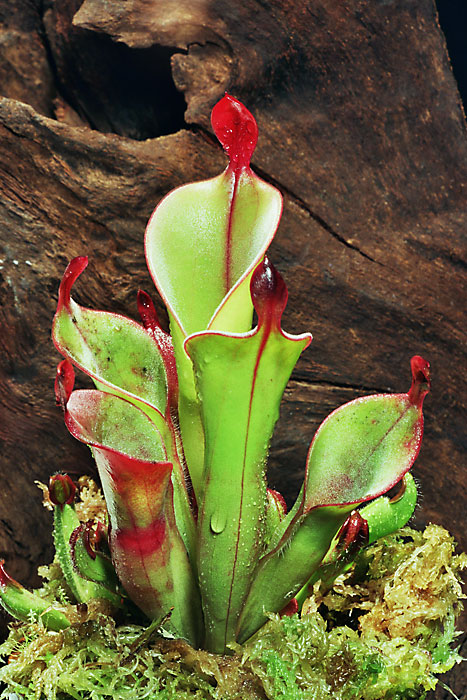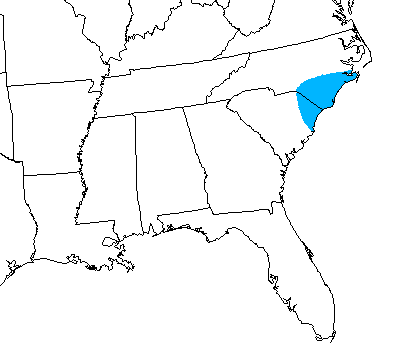|
Aldrovanda
''Aldrovanda'' is a genus of carnivorous plants encompassing one extant species (''Aldrovanda vesiculosa'', the waterwheel plant) and numerous extinct taxa. The genus is named in honor of the Italian naturalist Ulisse Aldrovandi, the founder of the Botanical Garden of Bologna, Orto Botanico dell'Università di Bologna.Genaust, Helmut (1976). ''Etymologisches Wörterbuch der botanischen Pflanzennamen'' ''Aldrovanda vesiculosa'' has been reported from scattered locations in Europe, Asia, Africa, and Australia. Description The waterwheel is a small, free floating and rootless aquatic plant, with a length of about , and whorls of about in diameter. At every the plant branches, sometimes forming offshoots. An average of 12 to 19 whorls spans the length of the plant, each with about 5 to 9 leaves, each up to long. The growth is faster than terrestrial carnivorous plants, sometimes growing about a day. In temperate regions the plant goes dormant in the winter, forming turions of ... [...More Info...] [...Related Items...] OR: [Wikipedia] [Google] [Baidu] |
Aldrovanda Vesiculosa
''Aldrovanda vesiculosa'', commonly known as the waterwheel plant, is the sole extant species in the flowering plant genus ''Aldrovanda'' of the family Droseraceae. The plant captures small aquatic invertebrates using traps similar to those of the Venus flytrap. The traps are arranged in whorls around a central, free-floating stem, giving rise to the common name. This is one of the few plant species capable of rapid movement. While the genus ''Aldrovanda'' is now monotypic, up to 19 extinct species are known in the fossil record. While the species displays a degree of morphological plasticity between populations, ''A. vesiculosa'' possesses a very low genetic diversity across its entire range. ''A. vesiculosa'' has declined over the last century to only 50 confirmed extant populations worldwide. These are spread across Europe, Africa, Asia, and Australia. However, potentially invasive populations exist in the eastern United States. It is kept by hobbyists. Morphology ''Aldrov ... [...More Info...] [...Related Items...] OR: [Wikipedia] [Google] [Baidu] |
Carnivorous Plant
Carnivorous plants are plants that derive some or most of their nutrients from trapping and consuming animals or protozoans, typically insects and other arthropods. Carnivorous plants still generate some of their energy from photosynthesis. Carnivorous plants have adapted to grow in places where the soil is thin or poor in nutrients, especially nitrogen, such as acidic bogs. They can be found on all continents except Antarctica, as well as many Pacific islands. In 1875 Charles Darwin published '' Insectivorous Plants'', the first treatise to recognize the significance of carnivory in plants, describing years of painstaking research. True carnivory is believed to have evolved independently at least 12 times in five different orders of flowering plants, and is represented by more than a dozen genera. This classification includes at least 583 species that attract, trap, and kill prey, absorbing the resulting available nutrients. Venus flytrap (''Dionaea muscipula''), p ... [...More Info...] [...Related Items...] OR: [Wikipedia] [Google] [Baidu] |
Carnivorous Plant
Carnivorous plants are plants that derive some or most of their nutrients from trapping and consuming animals or protozoans, typically insects and other arthropods. Carnivorous plants still generate some of their energy from photosynthesis. Carnivorous plants have adapted to grow in places where the soil is thin or poor in nutrients, especially nitrogen, such as acidic bogs. They can be found on all continents except Antarctica, as well as many Pacific islands. In 1875 Charles Darwin published '' Insectivorous Plants'', the first treatise to recognize the significance of carnivory in plants, describing years of painstaking research. True carnivory is believed to have evolved independently at least 12 times in five different orders of flowering plants, and is represented by more than a dozen genera. This classification includes at least 583 species that attract, trap, and kill prey, absorbing the resulting available nutrients. Venus flytrap (''Dionaea muscipula''), p ... [...More Info...] [...Related Items...] OR: [Wikipedia] [Google] [Baidu] |
Dionaea (plant)
The Venus flytrap (''Dionaea muscipula'') is a carnivorous plant native to subtropical wetlands on the East Coast of the United States in North Carolina and South Carolina. It catches its prey—chiefly insects and arachnids—with a trapping structure formed by the terminal portion of each of the plant's leaves, which is triggered by tiny hairs (called "trigger hairs" or "sensitive hairs") on their inner surfaces. When an insect or spider crawling along the leaves contacts a hair, the trap prepares to close, snapping shut only if another contact occurs within approximately twenty seconds of the first strike. Triggers may occur with a tenth of a second of contact. The requirement of redundant triggering in this mechanism serves as a safeguard against wasting energy by trapping objects with no nutritional value, and the plant will only begin digestion after five more stimuli to ensure it has caught a live bug worthy of consumption. ''Dionaea'' is a monotypic genus closely relat ... [...More Info...] [...Related Items...] OR: [Wikipedia] [Google] [Baidu] |
Venus Flytrap
The Venus flytrap (''Dionaea muscipula'') is a carnivorous plant native to subtropical wetlands on the East Coast of the United States in North Carolina and South Carolina. It catches its prey—chiefly insects and arachnids—with a trapping structure formed by the terminal portion of each of the plant's leaves, which is triggered by tiny hairs (called "trigger hairs" or "sensitive hairs") on their inner surfaces. When an insect or spider crawling along the leaves contacts a hair, the trap prepares to close, snapping shut only if another contact occurs within approximately twenty seconds of the first strike. Triggers may occur with a tenth of a second of contact. The requirement of redundant triggering in this mechanism serves as a safeguard against wasting energy by trapping objects with no nutritional value, and the plant will only begin digestion after five more stimuli to ensure it has caught a live bug worthy of consumption. ''Dionaea'' is a monotypic genus closely relat ... [...More Info...] [...Related Items...] OR: [Wikipedia] [Google] [Baidu] |
Palaeoaldrovanda Splendens
''Palaeoaldrovanda splendens'' is a form taxon of uncertain identity. It was for a long time thought to be an extinct angiosperm allied to the carnivorous plant genus ''Aldrovanda''. Cajsa Lisa Anderson ''et al.'' (2005) wrote: "synapomorphic characters that link the fossils seeds f ''P. splendens''to extant ''Aldrovanda'' include hard testa with an outer epidermis of palisade cells and with a smooth, strongly reflecting surface, short micropylar neck, and extruding, pointed chalazal area". However, research published by Zuzana Heřmanová and Jiří Kvaček in 2010 has cast doubt on this hypothesis. These authors identified the fossilised remains of ''Palaeoaldrovanda'' as insect egg An egg is an organic vessel grown by an animal to carry a possibly fertilized egg cell (a zygote) and to incubate from it an embryo within the egg until the embryo has become an animal fetus that can survive on its own, at which point the a ...s, writing:Heřmanová, Zuzana & Jiří K ... [...More Info...] [...Related Items...] OR: [Wikipedia] [Google] [Baidu] |
Turion (botany)
A turion (from Latin turio meaning "shoot") is a type of bud that is capable of growing into a complete plant. A turion may be an underground bud. Many members of the genus ''Epilobium'' are known to produce turions at or below ground level. Some aquatic plant species produce overwintering turions, especially in the genera ''Potamogeton'', ''Myriophyllum'', ''Aldrovanda'' and ''Utricularia''. These plants produce turions in response to unfavourable conditions such as decreasing day-length or reducing temperature. They are derived from modified shoot apices and are often rich in starch and sugars enabling them to act as storage organs. Although they are hardy (frost resistant), it is probable that their principal adaptation is their ability to sink to the bottom of a pond or lake when the water freezes. Because water expands anomalously at lower temperatures, water at is denser than colder water and stays at the bottom, and in this water turions over-winter before rising agai ... [...More Info...] [...Related Items...] OR: [Wikipedia] [Google] [Baidu] |
Ulisse Aldrovandi
Ulisse Aldrovandi (11 September 1522 – 4 May 1605) was an Italian naturalist, the moving force behind Bologna's botanical garden, one of the first in Europe. Carl Linnaeus and the comte de Buffon reckoned him the father of natural history studies. He is usually referred to, especially in older scientific literature in Latin, as Aldrovandus; his name in Italian is equally given as Aldroandi. Life Aldrovandi was born in Bologna to Teseo Aldrovandi and his wife, a noble but poor family. His father was a lawyer, and Secretary to the Senate of Bologna, but died when Ulisse was seven years old. His widowed mother wanted him to become a jurist. Initially he was sent to apprentice with merchants as a scribe for a short time when he was 14 years old, but after studying mathematics, Latin, law, and philosophy, initially at the University of Bologna, and then at the University of Padua in 1545, he became a notary. His interests successively extended to philosophy and logic, which he ... [...More Info...] [...Related Items...] OR: [Wikipedia] [Google] [Baidu] |
Late Cretaceous
The Late Cretaceous (100.5–66 Ma) is the younger of two epochs into which the Cretaceous Period is divided in the geologic time scale. Rock strata from this epoch form the Upper Cretaceous Series. The Cretaceous is named after ''creta'', the Latin word for the white limestone known as chalk. The chalk of northern France and the white cliffs of south-eastern England date from the Cretaceous Period. Climate During the Late Cretaceous, the climate was warmer than present, although throughout the period a cooling trend is evident. The tropics became restricted to equatorial regions and northern latitudes experienced markedly more seasonal climatic conditions. Geography Due to plate tectonics, the Americas were gradually moving westward, causing the Atlantic Ocean to expand. The Western Interior Seaway divided North America into eastern and western halves; Appalachia and Laramidia. India maintained a northward course towards Asia. In the Southern Hemisphere, Australia an ... [...More Info...] [...Related Items...] OR: [Wikipedia] [Google] [Baidu] |
Seed
A seed is an embryonic plant enclosed in a protective outer covering, along with a food reserve. The formation of the seed is a part of the process of reproduction in seed plants, the spermatophytes, including the gymnosperm and angiosperm plants. Seeds are the product of the ripened ovule, after the embryo sac is fertilized by sperm from pollen, forming a zygote. The embryo within a seed develops from the zygote, and grows within the mother plant to a certain size before growth is halted. The seed coat arises from the integuments of the ovule. Seeds have been an important development in the reproduction and success of vegetable gymnosperm and angiosperm plants, relative to more primitive plants such as ferns, mosses and liverworts, which do not have seeds and use water-dependent means to propagate themselves. Seed plants now dominate biological niches on land, from forests to grasslands both in hot and cold climates. The term "seed" also has a general mean ... [...More Info...] [...Related Items...] OR: [Wikipedia] [Google] [Baidu] |
Carnivorous Plant Newsletter
The ''Carnivorous Plant Newsletter'' is the official publication of the International Carnivorous Plant Society (ICPS), the largest such organization in the world. It is headquartered in Walnut Creek, California. History and editorship The newsletter has been published every year since its inception in 1972. It was first published as a stenciled product, with annual subscription priced at $1 for those in the contiguous United States, Mexico and Canada, and $2 for those living elsewhere. The first issue, from April 1972, opened with the following paragraph: In 1972 the newsletter had around 25 subscribers; this number quickly grew to more than 100 by June 29 of that year and reached 600 in July 1976. In 2018, the quarterly print run is 1400 copies. In volume 7 (1978), the newsletter started printing in a 6 by 9 inch format with colour covers, and limited colour reproduction in some articles. The publication was founded by Don Schnell and Joe Mazrimas. Additional early ed ... [...More Info...] [...Related Items...] OR: [Wikipedia] [Google] [Baidu] |
Leaf
A leaf ( : leaves) is any of the principal appendages of a vascular plant stem, usually borne laterally aboveground and specialized for photosynthesis. Leaves are collectively called foliage, as in "autumn foliage", while the leaves, stem, flower, and fruit collectively form the shoot system. In most leaves, the primary photosynthetic tissue is the palisade mesophyll and is located on the upper side of the blade or lamina of the leaf but in some species, including the mature foliage of ''Eucalyptus'', palisade mesophyll is present on both sides and the leaves are said to be isobilateral. Most leaves are flattened and have distinct upper ( adaxial) and lower ( abaxial) surfaces that differ in color, hairiness, the number of stomata (pores that intake and output gases), the amount and structure of epicuticular wax and other features. Leaves are mostly green in color due to the presence of a compound called chlorophyll that is essential for photosynthesis as it absor ... [...More Info...] [...Related Items...] OR: [Wikipedia] [Google] [Baidu] |







.png)